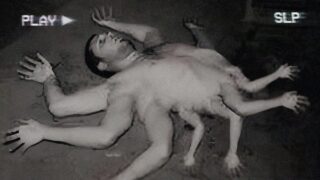MIGRAÇÕES SELVAGENS: As Mais Perigosas Do Planeta [Documentário]
0As the ice melts in the headwaters of the rivers, an extraordinary journey begins. Thousands of sockeye salmon emerge from the depths of the ocean and begin their return to the freshwaters of their birth. They follow an internal compass that responds to magnetic cues from the Earth, as if they can smell home through the current. … But they are not alone. In every corner of the planet, instinct calls. … Welcome to the Great Wild Migration. … For years, salmon have lived in the vast expanses of the Pacific Ocean, growing up in the bitter cold and the force of the tides. But now, with the call of their origin pulsing through their bodies, they set out toward the rivers from which they came. Their mission is clear: to return to reproduce… and then to die. … It is a brutal crossing. It is more than 200 kilometers against a river that roars like an impatient giant . Swift currents, steep drops, treacherous eddies, everything seems to conspire against them. But the salmon do not hesitate. It advances, driven by an ancient, almost sacred impulse. … For weeks, they swim without rest. There is no food. There is no shelter. Only the river and its fury. Each tense muscle, each beat of the tail, is a small victory over the impossible. And, little by little, the transformation begins. … The silver body gives way to a flaming red, the jaws curve into menacing hooks. It is the metamorphosis of the warrior. They are ready to fight, for territory, for the right to perpetuate life. … But this explosion of color also attracts hungry eyes. Along the banks, the grizzly bears stand like sentinels. Silent, patient, they watch. And when the moment is right, they strike with lethal precision. Each leap of the salmon may be its last. … In the lower reaches, where the river calms and the waters are shallow, the bears gain the upper hand. An adult bear can catch dozens of fish in a single day. For the salmon, every second is a struggle between life and death. … These are the last meters of an aquatic odyssey that lasted eight weeks. The salmon’s body is exhausted, every muscle is at its limit, its skin is marked by the fight. Still, it continues, as if its existence depended on just one last effort. And indeed, it does. … At the end of the journey, few will reach their destination, only those who have withstood countless trials. These warriors have escaped the ambushes of bears and eagles, endured weeks without food, and faced currents so strong that they could split logs in half. Every tail thump was a battle. But they continued determinedly to Lake Iliamna, one of the largest lakes in Alaska, where the water remains icy clean and crystal clear, just as it was thousands of years ago. … The final destination is the source of the river, where it all began. There, in calm waters, the last ritual begins: “mating.” Males and females meet, not by chance, but by the same call that guided them there. They pair up and fight, with their remaining strength, for the best spawning grounds. The competition is silent, fierce and urgent, as time is running out. … And then, as if they knew they had fulfilled their role, the salmon fall. One by one and surrender to the end. “But their death carries meaning!” The salmon is the link in an eternal cycle. Its journey ends where another begins. As it decomposes, its body returns to the earth everything it received from the sea. Nutrients are released and spread through the river waters, feeding insects, plants, birds… and also the small fry that will be born days later. Nothing is lost. Each life gives something back to the next. It is a silent legacy. A pact with the flow of nature itself. And the river. Tirelessly moves on. … Now imagine yourself in the middle of the African savannah, where the ground vibrates beneath your feet. Not because of an earthquake… but because of life in motion. One and a half million wildebeest. Five hundred thousand zebras. Hundreds of thousands of gazelles. All driven by the same ancient drive: “to survive.” … But this isn’t just a race for food or water. It’s an ancient migration, carved into the time. And there is a surprising detail that few people know: zebras and wildebeests do not compete with each other, they help each other. While wildebeests have a keen sense of smell for finding water, zebras have a memory. They remember all the paths. Together, they form a silent alliance. A living compass that crosses the Serengeti and the Masai Mara, crossing rivers, plains and open forests. … Amid the intense heat of the savannah, something surprising happens: thousands of wildebeest and zebra calves are born almost at the same time, as if responding to a single call from nature. This mass birth is no coincidence — it is a clever strategy. With so many calves together, predators become confused and have difficulty choosing just one prey. It is almost impossible to focus on a single target among so many moving bodies. …
And then comes the most dramatic moment: the crossing of the Mara River. The banks are silent… for a moment. The first wildebeest hesitates, the others wait. And suddenly, fear dissolves: hundreds throw themselves into the water. Strong currents. Giant crocodiles. The crossing is not just physical, it is a test of courage and instinct. … Many did not make it to the other side. But those who survived, exhausted, soaked and injured, continue. Because the migration never stops. It is cyclical. It is eternal. It is one of the last wild spectacles on the planet that has not been touched by man. … Isolated in the heart of the Indian Ocean, this small island seems forgotten by time. But when the first rains fall on its dense forest, something extraordinary awakens beneath the damp soil. The humidity, which penetrates every corner of the earth, activates an ancient signal. From the depths of the forest, emerges a great army: “the red crabs.” … For almost the entire year, they live hidden under leaves, roots and rocks, protected from light and heat. They are silent creatures, invisible to those who pass by. But now, the call of the ocean echoes loudly. And they can wait no longer. … Guided by an instinct that spans the ages, they abandon their refuge in the forest and set off on a journey that has been going on for over 200,000 years. A sacred crossing back to the sea where they were born. … But things are no longer as they once were. What was once just forest is now crisscrossed by roads, walls and human constructions. Urbanization has taken hold of these ancient travelers. … Aware of the importance of this natural phenomenon, the island’s inhabitants decided to come together to preserve this living tradition. They created elevated walkways, underground tunnels and protected migration corridors so that the crabs could cross the urban area safely. …
And then, guided by the moon, millions of red crabs begin to move, marching towards the beach. There are more than four million of them in an impressive parade that covers streets, trails and hillsides. … The females carry around 100,000 eggs under their delicate bodies. When they reach the sea, they sway in the waves under the moonlight and release them into the water, giving rise to tiny larvae, which soon float adrift in the ocean. Once this mission is accomplished, they return exhausted to the forest. … Meanwhile, at sea, the journey of the hatchlings is just beginning. But the ocean is immense and merciless. Most of the larvae will be devoured by predators or swept away by the currents. Few will survive. However, this year, luck smiled on the crabs. The tide was calm. The currents were favorable. And against all odds, billions of hatchlings found their way back to the island, beginning the cycle of life on dry land. … From the ocean to the forest, it is two kilometers. A journey that, for these newborns, seems endless. Each step is a struggle against the terrain. against the heat. and, above all, against their own kind. The adult crabs, driven by hunger, attack without distinction. They do not recognize children or lineages. They recognize only the opportunity for food. And so the young people run. They climb walls, cross streets, dodge dangers. They know they need to reach the edge of the forest, where the shade offers protection and hope. … But the jungle, although it seems like a shelter, holds its own threat. There, the yellow ants await. They move in coordinated groups, capable of annihilating hundreds of young crabs in a few minutes. They are fast, organized, and merciless predators. Only the strongest or luckiest young will be able to escape. … The survivors bury themselves again under the forest. There, they will remain hidden for a long 5 years. – – – – growing in silence, feeding on fallen leaves, waiting. Until nature calls them again. And, as if in an eternal cycle, they will emerge from the earth again and transform the island into a red sea of life in motion. … We continue towards the coast of Peru, which is home to one of the largest concentrations of seabirds on the planet. During the breeding season, millions of brown boobies, cormorants, and frigatebirds dominate the skies. But why? It all revolves around the “anchovetas,” small silvery fish that form schools so dense that they can be seen from above. These small fish, although fragile individually, become a magnet for predators when grouped together. … With aerodynamics adapted to hunting, brown boobies fly at high altitudes before diving at an almost vertical angle, reaching depths of up to 15 meters. Their eyes are specialized in calculating distances with extreme precision, and each dive is a combination of speed, angle and force. Impact with the surface of the water generates a brief explosion of foam, a visual sign of their efficiency as great marine hunters. … Curiously, the frigatebird cannot dive, because its feathers are not waterproof. But its opportunistic instinct finds another way: it intercepts other birds in the air and steals the freshly caught fish. Behind this fascinating balance lies an ancient secret: the “Humboldt Current.” Coming from the icy waters of Antarctica, it fertilizes the ocean with nutrients, transforming this coast into one of the richest marine nurseries on the planet. … Did you know that most marine life is concentrated near the coast? In just a narrow strip of sea, in the shallow and fertile waters, 90% of the ocean’s biodiversity pulsates. Beyond that, in the depths of the open sea, life is scarcer and more dispersed, a vast blue where silence reigns. … It is precisely at this border between the coastal waters and the open sea that another type of predator enters the scene: “dolphins”. With a sharp social intelligence, they surround the school of fish in formation. They work like a well-trained army, pushing the anchovies upwards, closer to the light. Without knowing it, they push the fish into the reach of the hungry birds. Two species. Two worlds. A common goal, and a synchronicity that was not combined. A perfect trap , created by the involuntary collaboration between marine mammals and ocean birds. … We now move on to a remote corner of East Africa, where one of the most inhospitable lakes in the world lies: “Lake Natron”. An ancient crater that shelters a body of water where almost nothing lives here. In this inhospitable place, the surface is a crust of salt. The wind carries a suffocating heat. The ground cracks under tiny paws, marking the passage of beings in search of survival. … But the desert changes. Dark clouds approach. Lightning cuts through the sky. And, as if in an act of redemption, the storm begins. The rain falls with force, breaking the arid silence of the lake. The water returns to the surface and with it, life awakens. … Flocks of flamingos appear on the horizon. Coming from various regions, they respond to the call of the rain as if guided by an instinct that spans generations. It is not just a reunion: it is a cyclical miracle. It is here that they will reproduce. … As the lake fills, a phenomenon occurs. The saline waters stimulate the explosion of algae, which dye the surface reddish and greenish tones. For the flamingos, these algae are food and an invitation. It is the signal that the courtship season has begun. Then they begin to build their nests: mounds of clay molded on the edge of the shallow waters. It is there that the new generation will awaken to the world. … Lake Natron offers something even more valuable than food: “safety.” Its extreme salinity repels predators. No wild animal dares to cross these waters. Here, amid the salt and heat, a refuge is born. Over time, the eggs hatch. The chicks emerge fragile, covered in light down, still unable to fly. But the lake, once a shelter, is transformed once again. “The sun reappears intensely.” The water evaporates quickly, and in its place are salt crystals as sharp as glass. It is time to leave! … The adult birds guide the young on an intense march, forced by circumstances. They must walk for more than 50 kilometers to find fresh water. Many do not make it. Some fall along the way, overcome by exhaustion or cuts. “The salt, which offered protection, now takes its toll.” But far away, a silent tragedy unfolds on the edge of a collapsing world. … The wind blows sharply over the coast of the Chukchi Peninsula. Here, every year, something unusual happens: thousands of walruses emerge from the cold waters and drag their heavy bodies onto the sand. It is not a festive migration. It is a retreat. The ice, their traditional resting place between dives, is no longer here. What remains is “Land!”. Hard, Cramped and Dangerous. The fight for space turns into a struggle for survival, as the Arctic changes beneath their feet. … The ice that once covered the seas melts a little more each year, retreating to unreachable regions. Now, this cramped beach has become the last resting place for hundreds of thousands of walruses. But there is not enough space! A calf tries to find shelter among the gigantic bodies, which can weigh more than a ton. There is nowhere to pass. Every movement is a threat. Pushing, crushing, stepping. The crowd becomes its own danger. … In search of relief, many walruses try to climb cliffs that were not made for their heavy paws. High up, the air is cooler. There are fewer bodies. More room to breathe. But the ascent is risky. The descent… is simply IMPOSSIBLE. … Walruses, despite their imposing size, have limited vision when they are out of the water. In moments of panic or when trying to return to the sea, they do not notice the dangers around them. In a desperate impulse, many jump. Hundreds fall, one after the other, plummeting from great heights. It is a tragedy that repeats itself every year. A shocking reminder that the Arctic is disappearing before our eyes. … Walruses. Polar bears. Seals. Entire species struggle to adapt to a planet that is changing too quickly. But where should these animals go when their homes dissolve? Silence remains. And with it, reflection. … If this Documentary touched you in any way, if it awakened emotion, reflection or a new perspective on the planet, “Consider leaving a Like”. “It is a simple gesture”, but of great importance to the channel. Thank you and have a good trip.









